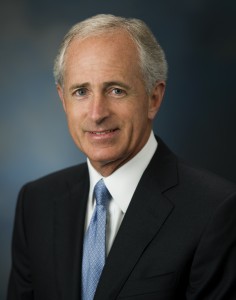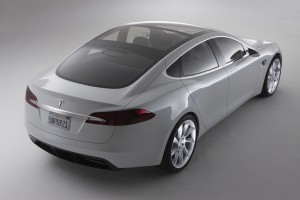The first three auto loans for developing “advanced technology” that were announced earlier today actually had their origins under the Bush Administration when the economy, auto companies and taxpayers were in much better shape, at least on the paper that mortgage-backed securities were written on.
Section 136 of the Energy Independence and Security Act of 2007, advanced by the Bush Administration, established an incentive program consisting of both grants and direct loans to support the development of advanced technology vehicles and associated components in the United States. The Department of Energy (DOE) is charged with administering the section 136 program, now known as the Advanced Technology Vehicles Manufacturing Loan Program (ATVM).
Under section 136, the ATVM provides loans to automobile and automobile part manufacturers for the cost of re-equipping, expanding, or establishing manufacturing facilities in the United States to produce “advanced technology vehicles” or qualified components, and for associated engineering integration costs.
 First appropriated in the fall of 2008, the program will provide about $25 billion in loans to companies making cars and components in U.S. factories that increase fuel economy at least 25% above 2005 fuel economy levels. The technical and financial review process is focused not on choosing a single technology over others, but is aimed at promoting multiple approaches for achieving a fuel efficient economy, in other words — a scattershot approach that allows the doling out of tax dollars over multiple Congressional areas.
First appropriated in the fall of 2008, the program will provide about $25 billion in loans to companies making cars and components in U.S. factories that increase fuel economy at least 25% above 2005 fuel economy levels. The technical and financial review process is focused not on choosing a single technology over others, but is aimed at promoting multiple approaches for achieving a fuel efficient economy, in other words — a scattershot approach that allows the doling out of tax dollars over multiple Congressional areas.
Applications for the loan program have included vehicles running on electricity, biofuels, and advanced combustion engines. They were submitted by both car and component makers, U.S. automakers, manufacturing subsidiaries or joint ventures of offshore-based companies, including the Chinese, auto parts suppliers, and startup businesses, some of which appear to be, surprise!, politically connected.
The $8 billion granted in loans today to the Ford Motor Company, Nissan Motors and Tesla are all that are authorized under the fiscal year 2009 budget, which expires at the end of this September. As the deficit continues to rise to unsustainable levels, political opposition from the same politicians who caused the current deficit is rising. Whether the blather and posturing turns to action is debatable, but other factors than Republican and Democratic squabbling about whom gets to reward their special interests are now in play.
The once almighty dollar is also showing signs of weakening, if not collapsing. China our largest creditor is threatening to dump dollars, and wants a new international currency to replace the dollar and is supported by our so-called European allies. The price of oil is rising, not from market demand but from the weakening greenback. And the U.S. treasury Department is having trouble printing more money by way of its T-bill auctions, which are no longer over-subscribed to put it politely.
What this means for the future funding of all programs is unclear, but subsidies for private industrial programs such as 136 will without question come under scrutiny as the mid-term elections come closer. So the three companies today that benefited from taxpayer loans – loans that likely would not be granted by private financial sector lenders – have been given a gift from you.
Here’s a closer look at where your money is going.
Ford Motor Company
Ford will receive $5.9 billion in loans through 2011 to help finance numerous “engineering advances” to traditional internal combustion engines and electrified vehicles. In addition, theses loans will help the company convert two truck plants to the production of cars. Ford says it will be raising the fuel efficiency of more than a dozen popular models, including the Focus, Escape, Taurus and F-150, representing close to two million new vehicles annually and helping to “transform nearly 35,000 employees to green engineering and manufacturing jobs” in factories across 5 states — Illinois, Kentucky, Michigan, Missouri, and Ohio.
Ford, of course, already has announced much, if not all of this, as part of its struggle for survival. And would have to do it anyway without taxpayer support. Take, for example, its direct injection, turbocharged EcoBoost engine and multi-speed transmissions that have been under development for years. How this differs from some the taxpayer monies advanced to Chrysler and General Motors is open to debate. Our comment section is open 24 hours, as always.
The facilities affected might provide a clue to today’s announcement. They include UAW and Democratic strongholds such as Chicago Assembly, Louisville Assembly, Dearborn Assembly, Dearborn Engine, Livonia Transmission (Michigan), Michigan Assembly, Van Dyke Transmission (Michigan), Kansas City Assembly, Cleveland Engine, Lima Engine, and Sharonville (Ohio) Transmission.
Nissan
Nissan will receive $1.6 billion to produce electric cars and battery packs at its manufacturing complex in Smyrna, Tennessee. You might remember Senator Corker’s violent and vocal opposition to loans to domestic car companies earlier this year? The Tennessee Republican has been relatively quiet lately as DOE reviewed the 136 applications.

"Outstanding news both for the local economy and for Tennessee's position as a leader in America's automotive and energy future."
Well, U.S. Senators Lamar Alexander (R-Tenn.) and Bob Corker (R-Tenn.) and U.S. Representative Bart Gordon (D-Tenn. 6th) said today that Nissan’s award of a $1.6 billion Department of Energy loan to produce electric cars and battery packs at its manufacturing complex in Smyrna, Tennessee,” is outstanding news both for the local economy and for Tennessee’s position as a leader in America’s automotive and energy future.” (I am trying not to laugh as I type.)
The loan will aid in the construction of a new battery plant and modifications to the existing Nissan assembly facility. Electric cars, already announced by the Renault-Nissan Alliance will be built there. However, the first Nissan electric vehicles that will go on sale in the U.S. will be built in Japan, and even when production transfers here look for a high amount of Japanese content. It will be two to three years after a Nissan electric vehicle first appears in the U.S. before one U.S. manufacturing job is created here.
Critics point out that we are using taxpayer funds to help a company that will send the money back to France and Japan. Well, we have already used taxpayer money to turn Chrysler over to Fiat.
Nissan says it aims to “manufacture a cost-competitive all-electric car, overcoming a major obstacle to widespread adoption of pure electric vehicles.” Part of the cost cutting is now courtesy of you. Nissan will offer electric vehicles to fleet and retail customers, and plans to ramp up production capacity in Smyrna up to 150,000 vehicles annually, it promises. Nissan says the project “may result” in an increase of up to 1,300 jobs in Smyrna when full production is reached.
Tesla Motors
Tesla Motors will receive $465 million loan that is also supposed to advance electric vehicles. The first loan will finance a manufacturing facility for the Tesla Model S sedan. The Model S is expected to be $50,000 less expensive (thanks, again, in part to your generosity,which also includes a $7,500 federal tax credit. ) than Tesla’s first vehicle, the $100,000-plus, quality challenged, Roadster, of which about 500 have been sold at a loss. The Model S Tesla claims will get the equivalent of more than 250 miles per gallon by using the same type of accounting standards that brought you Standard & Poors’ AAA ratings on junk bonds and AIG’s credit default swap instruments with nothing but paper or a press release behind them.
Production of the Model S is supposed to begin in 2011 and ramp up to 20,000 vehicles per year by the end of 2013, creating a promised 1,000 jobs in Southern California.
Tesla has had more reversals of strategies than an oscilloscope graph of alternating current, though. So stayed tuned. Tesla delayed some projects due to cash constraints, abandoned a development center in suburban Detroit, and replaced senior executives, some of whom are now suing it.
The second part of the taxpayer loan will support a plan to manufacture battery packs and electric drivetrains to be used in Teslas and in vehicles built by other automakers, including the Smart fortwo city car by Daimler. Early pilot battery pack production is said to begin in 2011, reaching about 10,000 by 2012, with 30,000 packs due in 2013. The new facility expects to employ 650 people in the Bay area of Northern California, home of Nancy Pelosi, the Democratic speaker of the House of Representatives.
I can’t wait for more loans to be approved. In the mean time, hang onto your wallet …



Ken, you have hit it squarely on the head. This is about spreading out the money around the country so that our elected officials can do what they do best…stay in office. I have never seen a more compelling case for term limits than the events of the past several years. Congress is out of control. Never mind Democrats and Republicans, it is career politicians versus the rest of us.
I find it particularly irritating that a loan was given to Tesla. While I wish them well and hope they succeed, funding their activity is the work of venture capital people… take a big risk and get a big return. Good for them. But you are talking about giving money from the U.S. tax payers to a company which has only produced a few hundred cars so far and they all cost more than $100,000 each! Most Americans can not afford a car like that. Nor can most Americans afford Tesla’s upcoming four-door sedan which is targeted to cost between $40 and $50 thousand. I just do not see how you can justify giving these people tax payer money… even if it is a loan.
I am sure that the allocation of the balance of the 25 billion will be equally interesting to watch. Competitions like the “X” prize for the first civilian space flight are much less expensive, have a proven track record for producing results, and leverage many times more money and manpower that you could purchase with a loan or grant of a similar amount.
With American companies going out of business how did a JAPANESE COMPANY get American tax dollars to send money and profits to JAPAN when the law says the money is to stop foreign competitors from displacing American Companies… AND… aren’t these companies supposed to bring in outside funds in order to actually get the money, ie: Isn’t Tesla supposed to bring in an ADDITIONAL 69 million dollars in order to get the money like the law says.. or did they just hand it over… The lobby filings for these three show they spent tens of millions of dollars to buy those awards.
Keep showing us the information and eventually we’ll wake up… I hope. Somehow average Americans need to have a say in how policies are made and tax dollars are spent. Oh yeah, that would be called voting. It all begins with us Americans fording the critical/true issues to be the priorities during campaign time and taking an interest in who we elect. So as a nation we elected/keep electing politicians who are bankrupting our country. We are proving to ourselves that the integrity and character of our leaders does matter. It’s like complaining that I wrecked my car while driving with my eyes closed. Let’s all start saying “I am responsible”